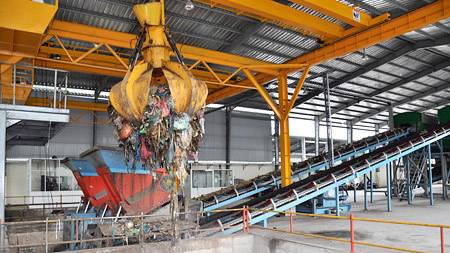Study finds large dioxin emissions from waste treatment plants
Friday, 10:33, 10/04/2015
Many incinerators that burn industrial and medical waste in Vietnam are discharging dangerous amounts of dioxin, some at 5,000 times the safe limit, according to a new research.
Le Ke Son, the lead researcher and a former official at the environment ministry, said the report is the first time “Vietnam admits that there’s dioxin discharged from industrial activities besides from dioxin left from the war.”
The research was conducted by Steering Committee 33, a national committee set up to mitigate the effects of toxic chemicals used by the US during the Vietnam war, and the Ministry of Natural Resources and Environment.
Dioxin, one of the most toxic and persistent compounds which can leave impacts including cancer through generations, can be inhaled or digested.
 |
Environmental group Greenpeace has said it is the most toxic manmade chemical ever identified.
Researchers said dioxin in sewage sludge can easily be absorbed into food through soil and water.
Researchers said dioxin in sewage sludge can easily be absorbed into food through soil and water.
Incinerators are responsible for most of the dioxin discharged in Vietnam, the research has revealed, based on the amount of dioxin and dioxin-related compounds (DRCs) measured in their emissions and sewage sludge.
Vietnam has not developed technologies to recycle and treat waste properly and mostly burns all of its garbage together.
The research team took 18 emission samples from medical, urban and industrial incinerators and all of them contained dioxin or DRCs, with seven exceeding the safe limit.
Health risks
Vietnam’s environment ministry allows waste treatment plants to emit dioxin at the toxicity equivalence (TEQ) of 600 picograms per normal cubic meter, or below. Three samples from incinerators in Hanoi exceeded this limit by up to 16 times.
Notably one incinerator in the nearby Hai Duong Province was found exceeding the limit by 81 times.
Ho Chi Minh City has the worst dioxin pollution caused by the disposal of sewage sludge from incinerators.
Vietnam does not set a dioxin limit for sewage sludge. But based on the Japanese standard of 10 picograms per normal cubic meter, three samples taken from three treatment factories were too polluted, with one exceeding the limit by 5,000 times.
Two other samples in Hanoi were five and 23 times beyond the limit while four samples in Hai Duong were between three and 129 times above the permitted level.
The researchers expressed concern of the high chance of dioxin pollution in the area around the incinerators.
